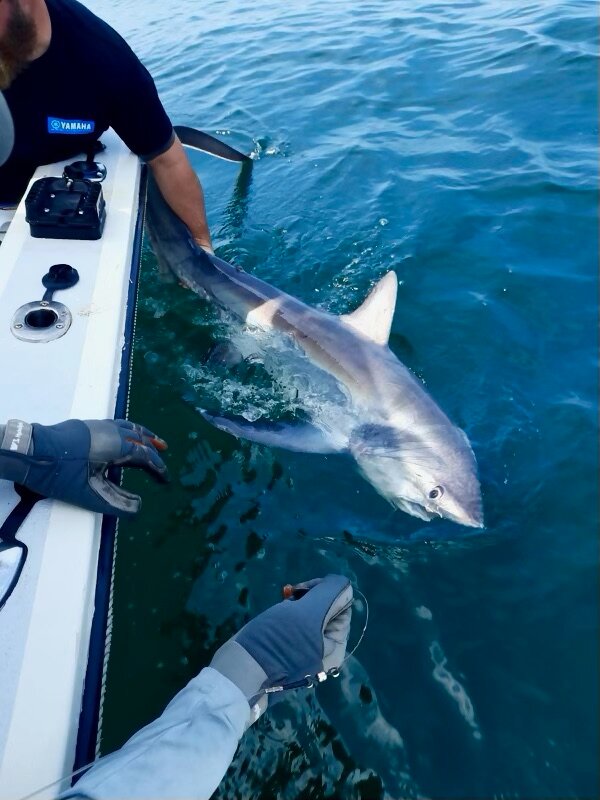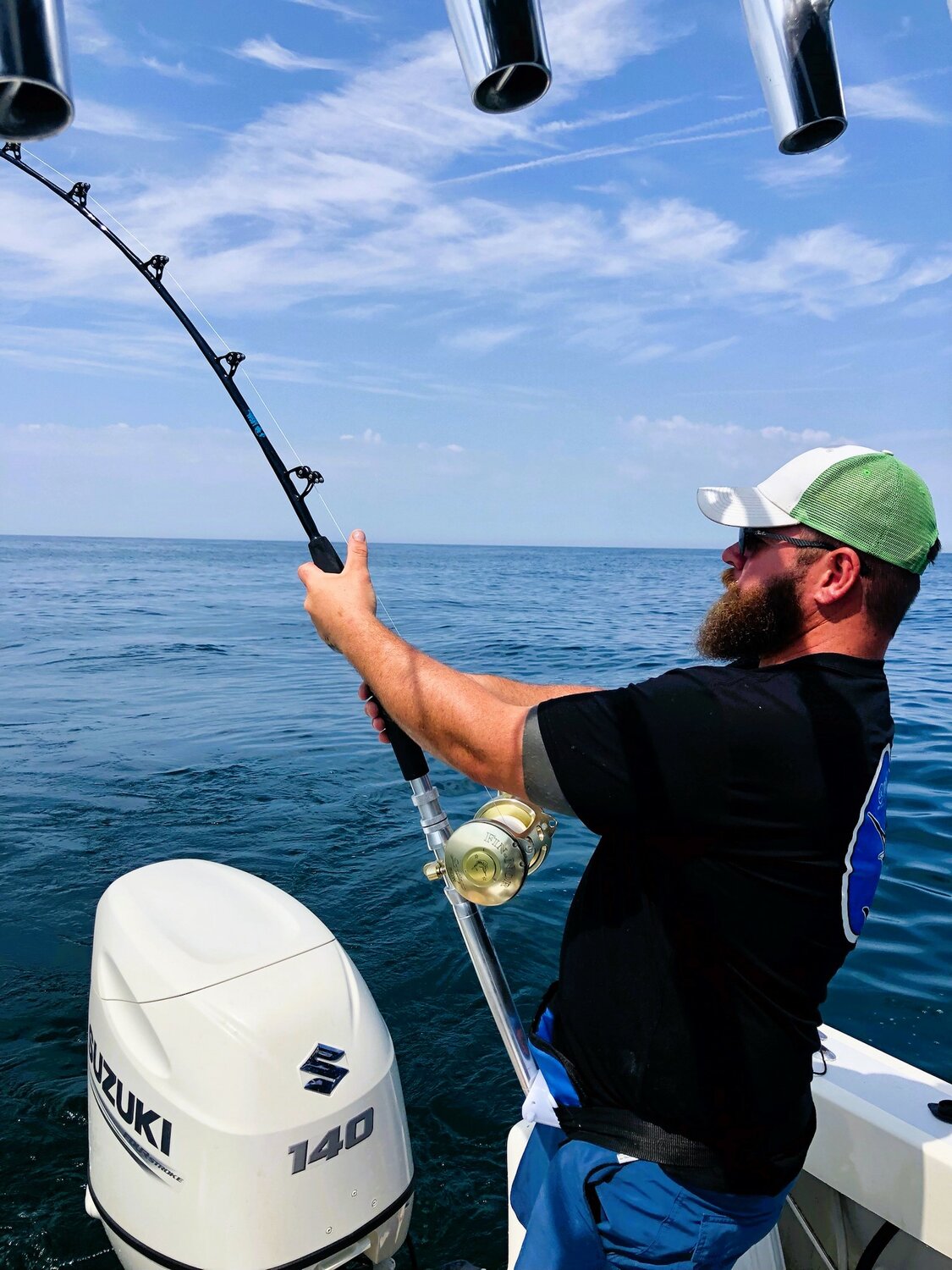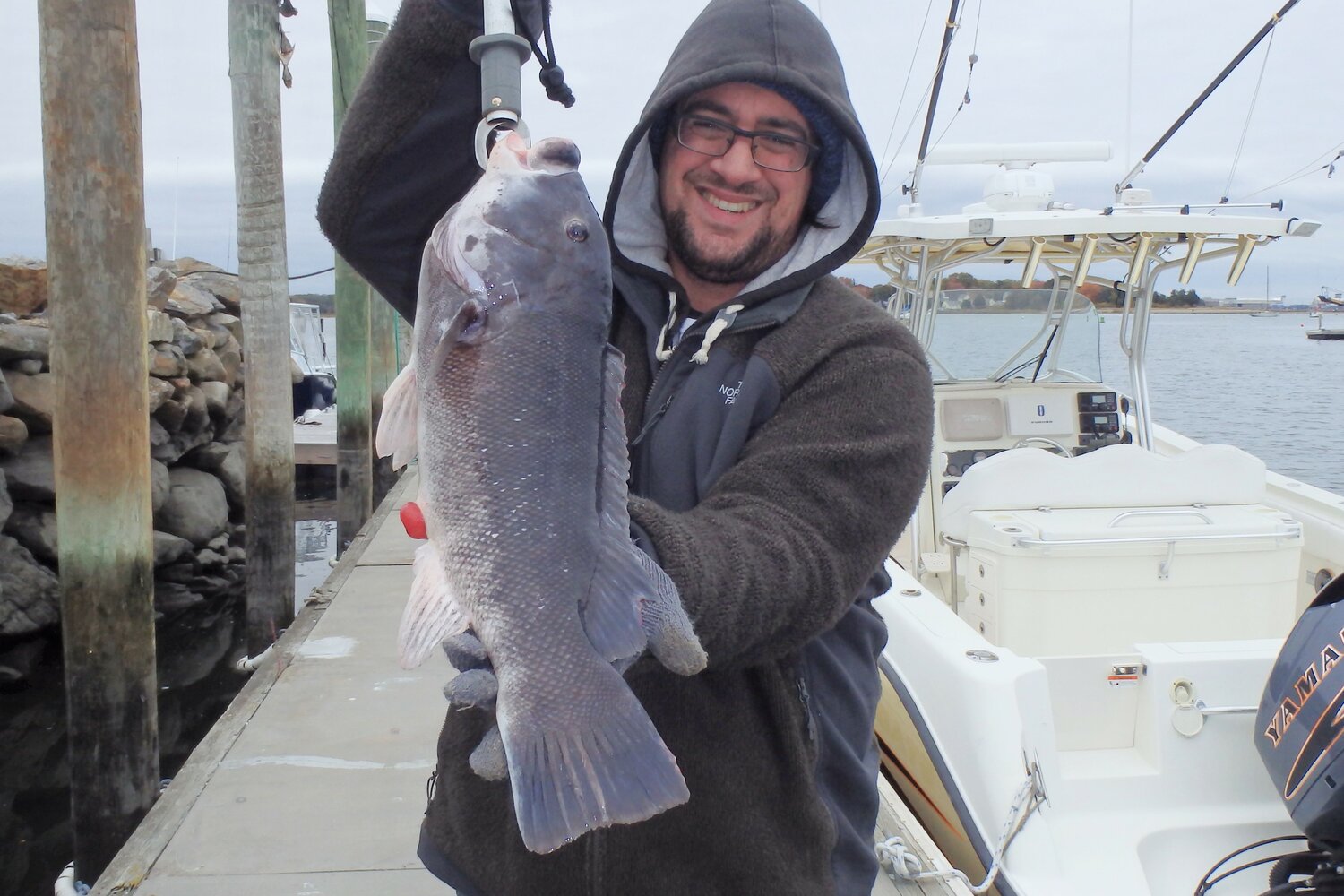- SATURDAY, JULY 20, 2024
Tips for a great fall tautog season
Tautog (or blackfish) is a great eating fish with a white delicate meat. They are not often sold in fish markets because they are difficult to harvest commercially. They are usually caught by rod and reel or fish traps rather than trawling for them because they live in or near structure.
Anglers are allowed just one trophy fish, 21” or larger; the minimum size is 16”, and a ten fish boat limit applies for private recreational vessels. The season reopened Aug. 1 and until Oct. 14 there is a three fish/person/day limit, and then it jumps to five fish from Oct. 15 to Dec. 31.
Here are six tips that can help you have a great tautog season.
Find structure to find tautog. Tautog can be fished from shore or boat, and in both cases they like structure (rocks, wrecks, bridge piers, dock pilings, mussel beds, ledges, holes and humps along the coast). So, no structure, no tautog.
Fish where the fish are. This is particularly true with tautog because they are a territorial species. You have to find the tautog, they are not going to find you. So if you get no bites, move to another spot. When you find them, you find them and the bite is on.
Boat placement is important. Find structure, estimate wind/drift direction and anchor up current from where you want to fish and drift back to the spot as the anchor is setting. Once in position, fish all sides of the boat. Cast a bit to cover as much area as you can. If still no bites, let some anchor line out to change your position. If still no bites, it is time to move the vessel.
Tautog baits. Green crabs or Asian crabs are the baits of choice in the fall. When using green crabs, make it easy for the tautog to bite and take the bait. I like to break off most of the legs and claws, leaving one per side on the end, cut the crab in half and hook it through one leg socket and out another.
Tautog rigs should have as little hardware as possible to avoid bottom tie-ups. I make single hook rigs with about a seven or eight feet of monofilament leader and attach it to the main braid line directly with a dropper loop for a pre-snelled ‘Lazar Sharp’ brand hook (you need sharp hooks to get through tough tautog lips). The loop is about five inches above the sinker.
To reduce bottom tie-ups by 50 percent, I use an egg sinker rig when in heavy structure. The egg sinker slides on a small piece of monofilament adorned with red and white beads, which has a two-way swivel on each end; a pre-snelled lazar sharp hook is attached to the end of the swivel and hangs down about eight inches.
Anglers also use tautog jigs tipped with crab with outstanding success. The jigs are made in a variety of colors mimicking Asian crabs, baby lobsters, green crabs (whole or cut in half).
Where to fish for Tautog. From shore look for rocky coastline like Beavertail Point, Jamestown, locations off Newport and off breakwater rock jetties in South County or the sides of the Cape Cod Canal. Bulkheads, pier pylons as well as fishing areas at Sabin Point, Colt State Park and Rocky Point Park. From a boat, the Plum Point lighthouse next to the Jamestown Bridge, the rock jetty north of Coddington Cove in Portsmouth, rock structures off Hope Island, around Brenton Reef in Newport, Whale Rock off Narragansett and the bolder fields south of Scarborough Beach, Ohio Ledge in the East Passage and any other place there is structure, debris, rock clusters, wrecks, mussel beds, etc.
Where’s the bite?
Striped bass and bluefish: “Bluefish have followed large schools of scup into the upper reaches of the Bay with a modest striped bass bite. The skipjack bluefish bite has been strong in estuaries,” said Dave Henault of Ocean State Tackle, Providence.
Declan O’Donnell of Breachway Bait & Tackle, Charlestown said, “Bass fishing has been very good both out in front of South County Beaches and in the salt ponds. Fish are chasing a variety of bait. Mackerel, sand eels, bunker, silversides, and rain bait. These fish are from school bass to slot and many over slot (28” to < 31”); both tides are producing fish in different locations. Bluefish are around too and as temperatures continue to drop more will filter in.”
Tautog
Angler Paul Boutiette reports, “This weekend it took a while to hook up off Pt. Judith, Narragansett in 40 feet of water, but we let out 20’ more anchor and my bride caught the first keeper at 17.” Finally I caught a keeper tog and we both were on the board. It was great to be catching tog again, and they are around.”
Declan O’Donnell said, “Tautog bite from shore has been great. Not too many people targeting from boats yet.”
“The tautog bite is good in the lower Bay in 20 to 40 feet of water off Narragansett, Tiverton and Jamestown,” said Dave Henault.
Fluke, black sea bass and scup
Declan O’Donnell said, “Fluke fishing has been slow, but lots of sea bass being caught with some nice sized ones in the mix.”
“We have a very strong scup bite in the entire Narragansett Bay, with the black sea bass and summer flounder (fluke) bite improving,” said Dave Henault.
Offshore
Declan O’Donnell said, “Tuna reports are still really solid. Both yellowfin and bluefin can be found relatively close. Even reports have been flying around of 70-pound bluefin a mile from shore chasing mackerel. Always carry a bigger rod in your boat this time of year; never know what you might run into.”
Angler Greg Vespe of Tiverton said, “We caught and released a thresher shark Sunday just southeast of the Sakonnet River. It took about an hour to land. It jumped fully out of the water once and tail slapped the water into a froth a few times. My father was at the helm, my son Shawn Hayes Costello and cousin Stephano were on the reel.”
Freshwater fishing continues to improve as things have cooled off a bit. “Shiners continue to produce for largemouth bass customers,” said Henault of Ocean State Tackle.
Dave Monti holds a captain’s master license and charter fishing license. He serves on a variety of boards and commissions and has a consulting business focusing on clean oceans, habitat preservation, conservation, renewable energy, and fisheries related issues and clients. Forward fishing news and photos to dmontifish@verison.net or visit www.noflukefishing.com.
Other items that may interest you











